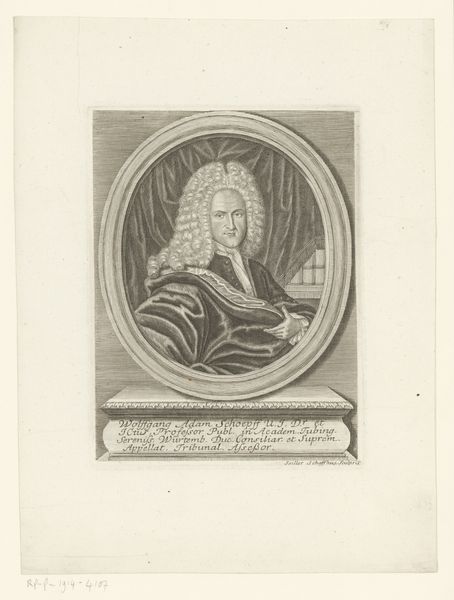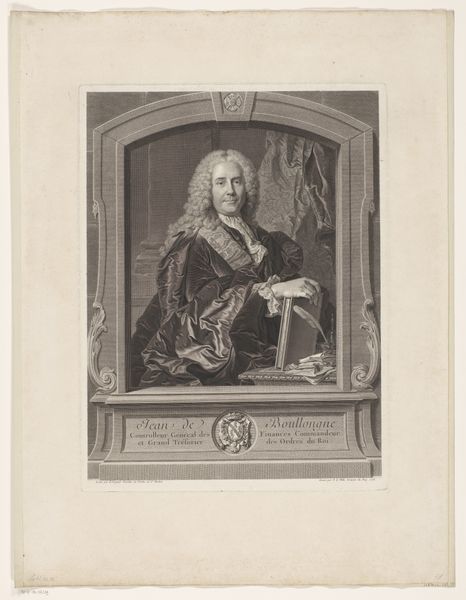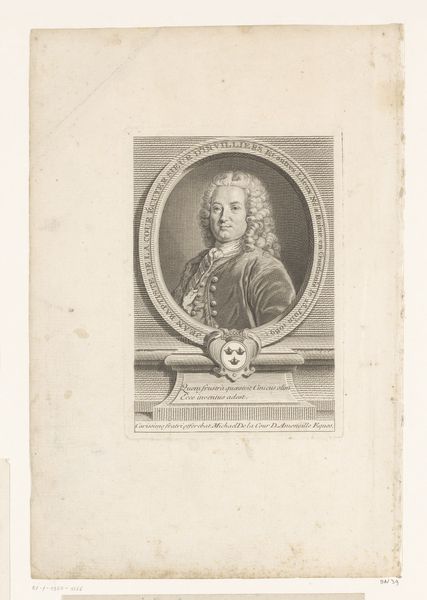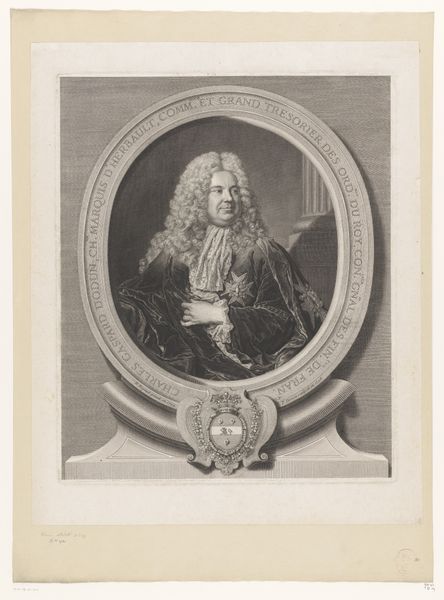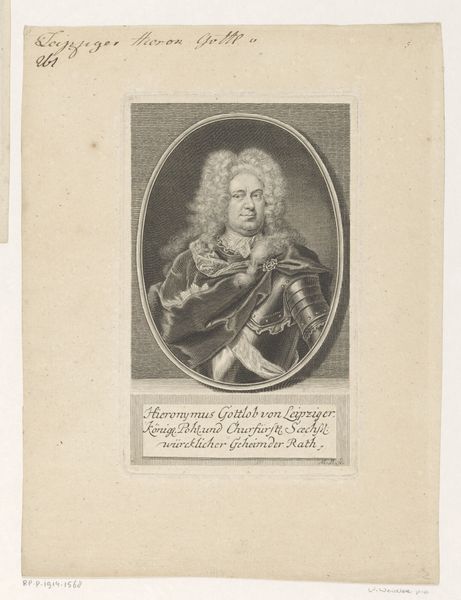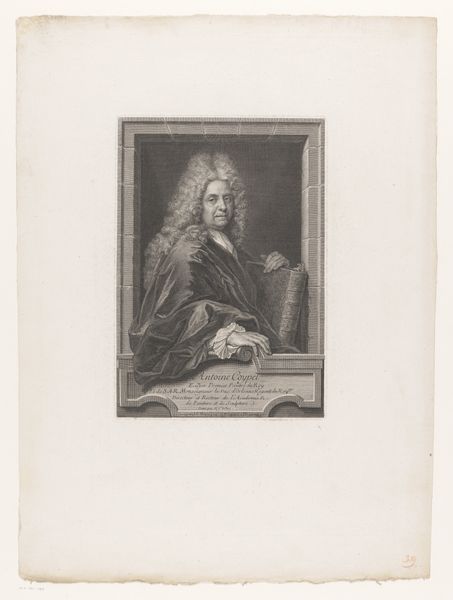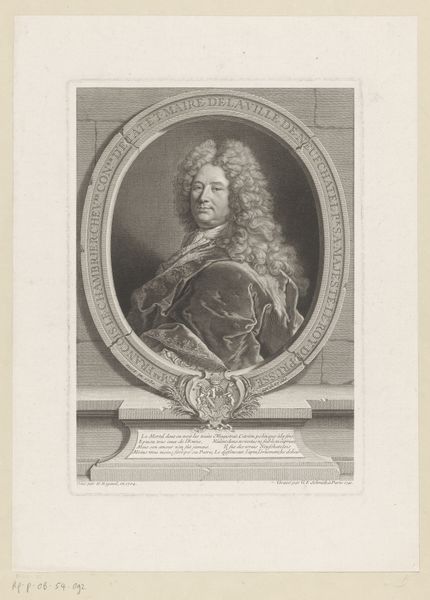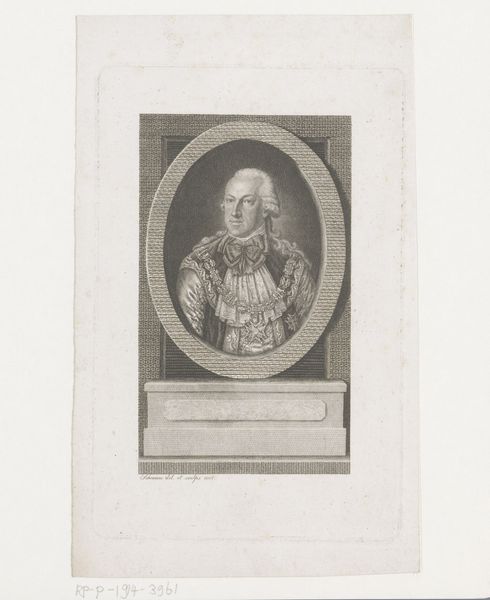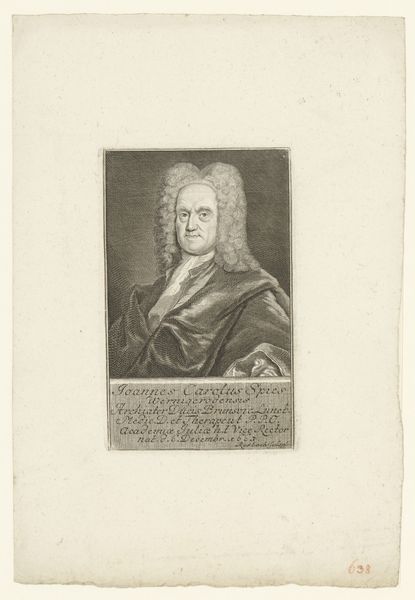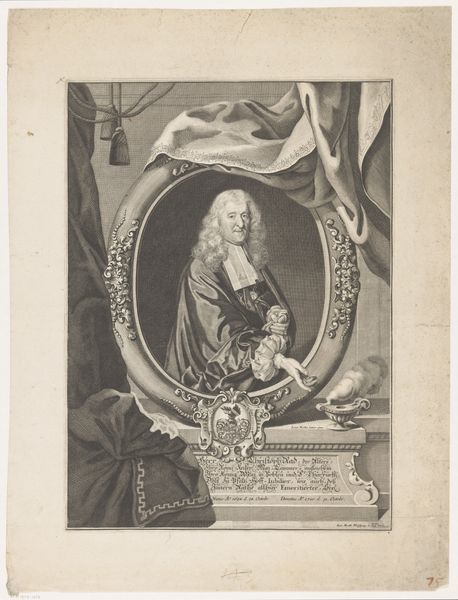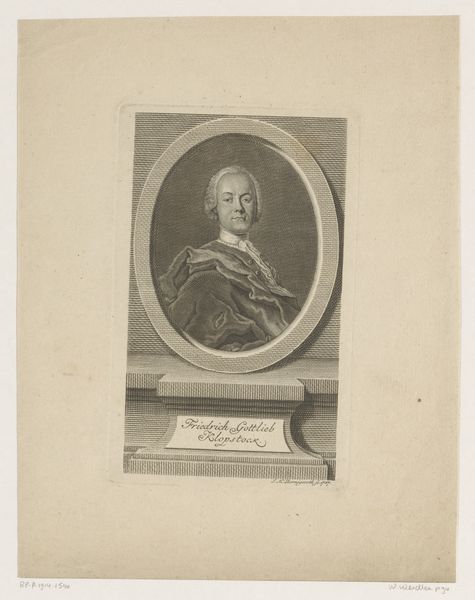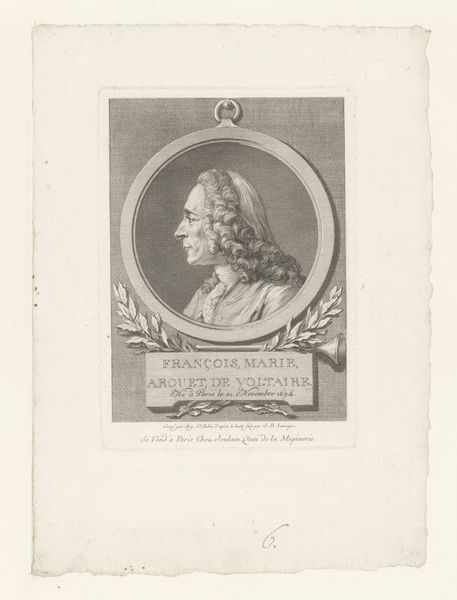
print, engraving
#
portrait
#
baroque
#
ink paper printed
# print
#
old engraving style
#
history-painting
#
engraving
Dimensions: height 200 mm, width 140 mm
Copyright: Rijks Museum: Open Domain
Curator: This print, residing here at the Rijksmuseum, offers us a glimpse into the world of 18th-century portraiture. The piece, executed through engraving, presents us with "Portret van Paul von Stetten". Though the artist’s official details are recorded as Johann Andreas Pfeffel, this is most likely the collective activity of a print workshop operating across 1684-1748. Editor: The first thing that strikes me is the hair. It’s like a cloud of white spun sugar, all contained within a rectangular border filled with strange insignia. It's imposing, certainly projecting power, but also slightly absurd in its extravagance. Curator: Exactly! The print's Baroque sensibilities aren't just aesthetic flourishes, they speak to the complex politics and performance of identity of that era. The immense wig, the carefully inscribed frame… These are visual signifiers of Stetten's status and position. The bordering seals are markers of imperial legitimacy, and reflect how identity and power are publicly constructed and meticulously broadcast. Editor: I keep returning to that border—it is visually so dense, an odd contrast to the subject’s very slight smirk and soft gaze. This image presents us with an official face encased within layers of social, heraldic symbolism, like putting quotation marks around a person. Is it possible to see through that? Or is the symbolism the point? Curator: Precisely that tension between personhood and performativity is what makes such portraits so potent. The "history-painting" elements—referencing allegorical scenes and idealized virtues—suggest the print attempts to place the subject into a larger narrative of virtue. I also see it reflecting on how individual actions intertwine with collective fates, political choices and social trajectories. How successful do you think this printed portrait has been, Editor? Editor: Well, let me reflect…There’s a fragility to it all. Despite the grand proclamations embedded into the ink on this paper, time has transformed how we interpret these images. We aren't necessarily impressed. We're distanced by its archaic nature, and so the human subject almost resists the imposed message. Looking at his eyes, Paul almost seems to invite us to challenge these systems today. It whispers of subversion. Curator: I completely agree, there’s something almost subversive now in looking at a representation that so intentionally attempts to project authority. Examining portraits through our contemporary lenses empowers us to engage with not only how those historical identities are being presented, but how present systems of power still try to present them. Editor: So true. It reminds us to critically reflect, question symbols of power, and even be mindful of how we present ourselves too. These are fascinating points of critical reflection on how both past and current politics create their own identities.
Comments
No comments
Be the first to comment and join the conversation on the ultimate creative platform.
